With the rapid evolution of semiconductor technology, the capacity of mobile ROM has also advanced significantly. Nowadays, flagship smartphones hardly ever feature 16GB ROM, and the recently released iPhone 8/iPhone 8 Plus has also eliminated the 32GB version, starting directly from 64GB. As the capacity of system firmware, apps, and various files continues to increase, there are high demands for flash memory capacity and high standards for read speeds. When purchasing models with large storage capacities, we cannot overlook the speed of the flash memory. In the current smartphone market, factors determining flash memory speed, aside from chip type and system optimization, include the impact of different transmission protocols.
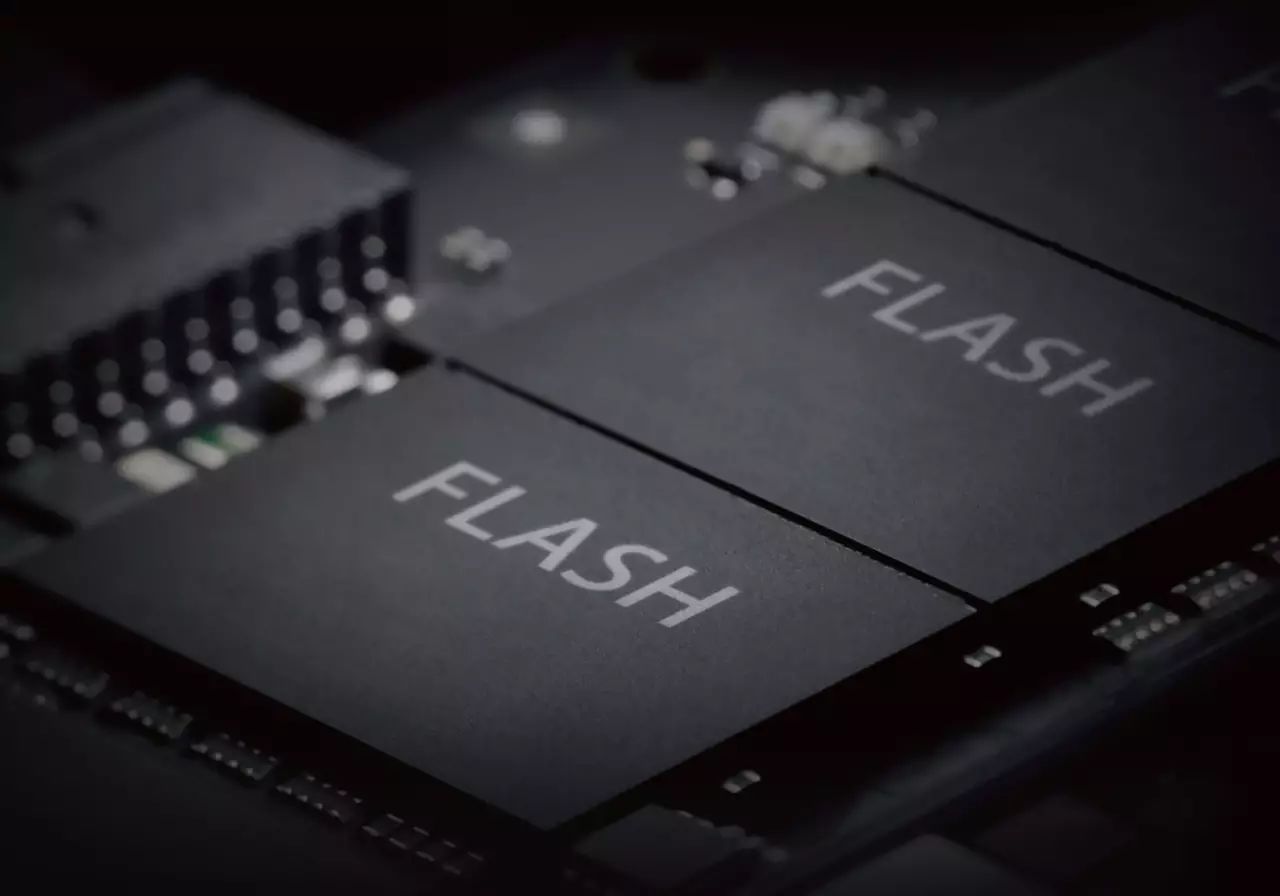
Three Major Families Based on NAND
The ROM we often mention in our evaluations refers to flash memory, where the data and cache of the apps installed on the phone are stored in the ROM. The faster the ROM speed, the quicker the apps load and run. The first commercially available flash memory was the NOR Flash chip launched by Intel, followed by NAND Flash released by Toshiba. NAND Flash has a faster read/write speed and a smaller area per storage unit, gradually becoming the mainstream in the storage market, and is now widely used in SSDs on PCs and ROMs on smartphones, which are essentially NAND flash.
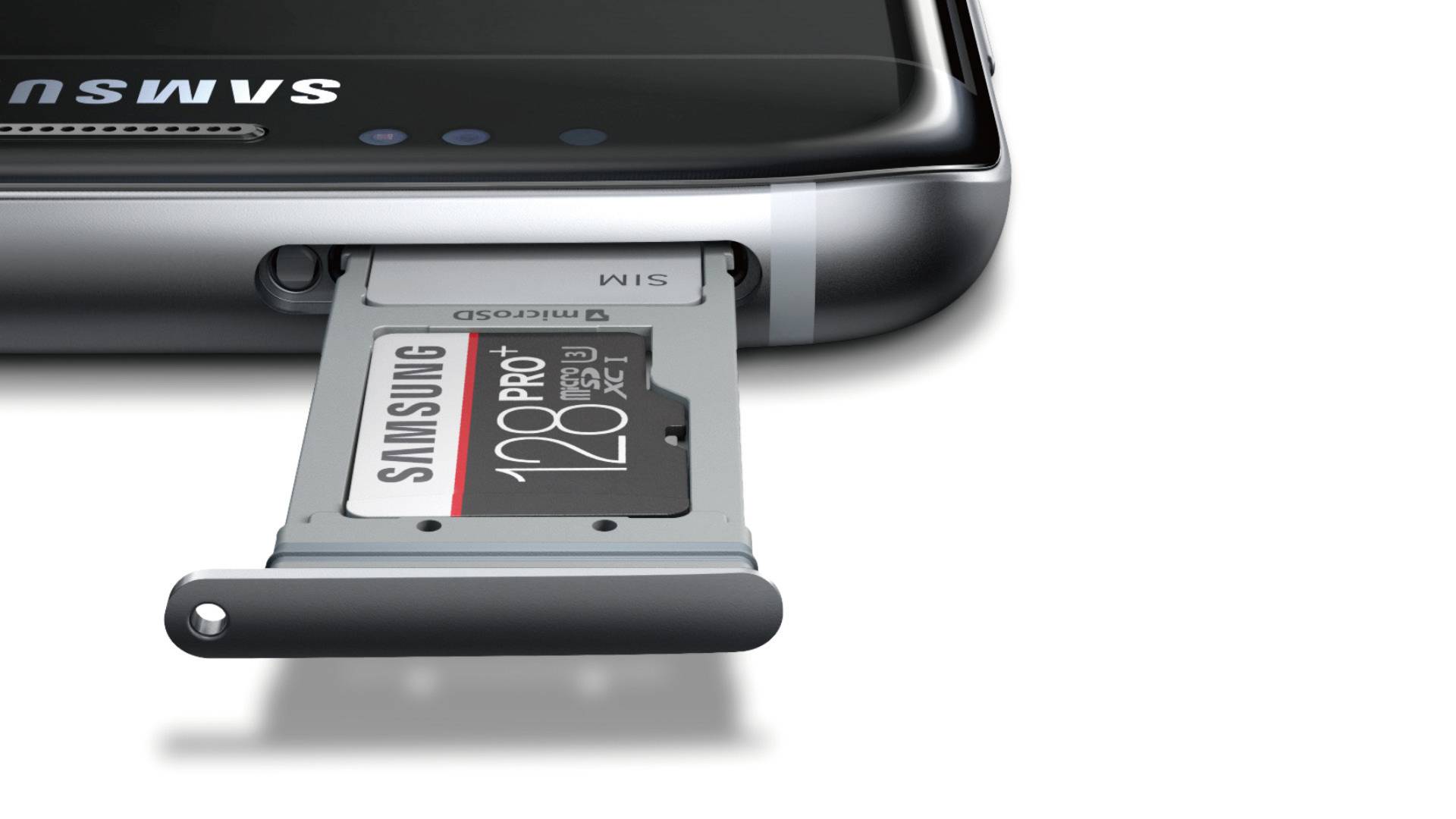
▲ As mobile ROM increases, more and more users no longer use microSD cards, partly because mobile ROM is sufficient for use, and partly because the read speeds of microSD cards are mostly inferior to NAND, resulting in inconsistent experiences.
Although mobile ROM is composed of NAND flash particles, there are significant differences in transmission performance due to different particle types and transmission protocols. The debate over which storage particle type, SLC, MLC, or TLC, is superior has been ongoing for a long time. SLC has the best performance but is rarely used in smartphones due to its high cost; MLC is adequately performant, moderately priced, and has a longer lifespan; TLC has lower overall performance, is cheaper, and has a relatively shorter lifespan.
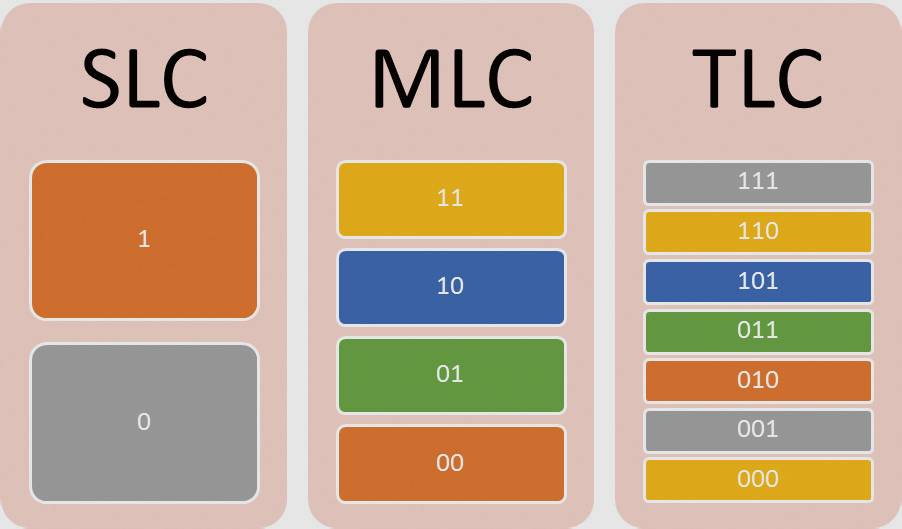
▲ Although most users believe MLC particles are better, with advancements in manufacturing processes and the gradual reduction in TLC costs, TLC products have started to flood the market, inevitably encroaching on MLC’s market share.
As for transmission protocols, eMMC, UFS, and NVMe are the three common types in the current mobile flash memory market, differing mainly in the controller chip, interface standards, and the underlying Flash chip standards. If we compare transmission protocols to highway lanes with different speed limits, the particle types are like vehicles with different horsepower, resulting in various speed combinations.
eMMC is an older technology, standing for embedded MultiMedia Card. Experienced mobile players may remember the MMC storage cards used in some older phones, which are quite similar to SD cards. Indeed, eMMC is developed from MMC, using an 8-bit parallel interface like MMC. Before 2015, almost all mainstream smartphones and tablets adopted this storage medium, which was sufficient for phones in an era of low transmission rates.
This standard has evolved from eMMC 4.3 to the current 5.1, with changes only in the bandwidth of the bus interface. Currently, the main bus interfaces for eMMC are eMMC 4.4, eMMC 4.5, eMMC 5.0, and eMMC 5.1, with theoretical bandwidths of 104MB/s, 200MB/s, 400MB/s, and 600MB/s respectively, although actual speeds in applications may be slightly lower.
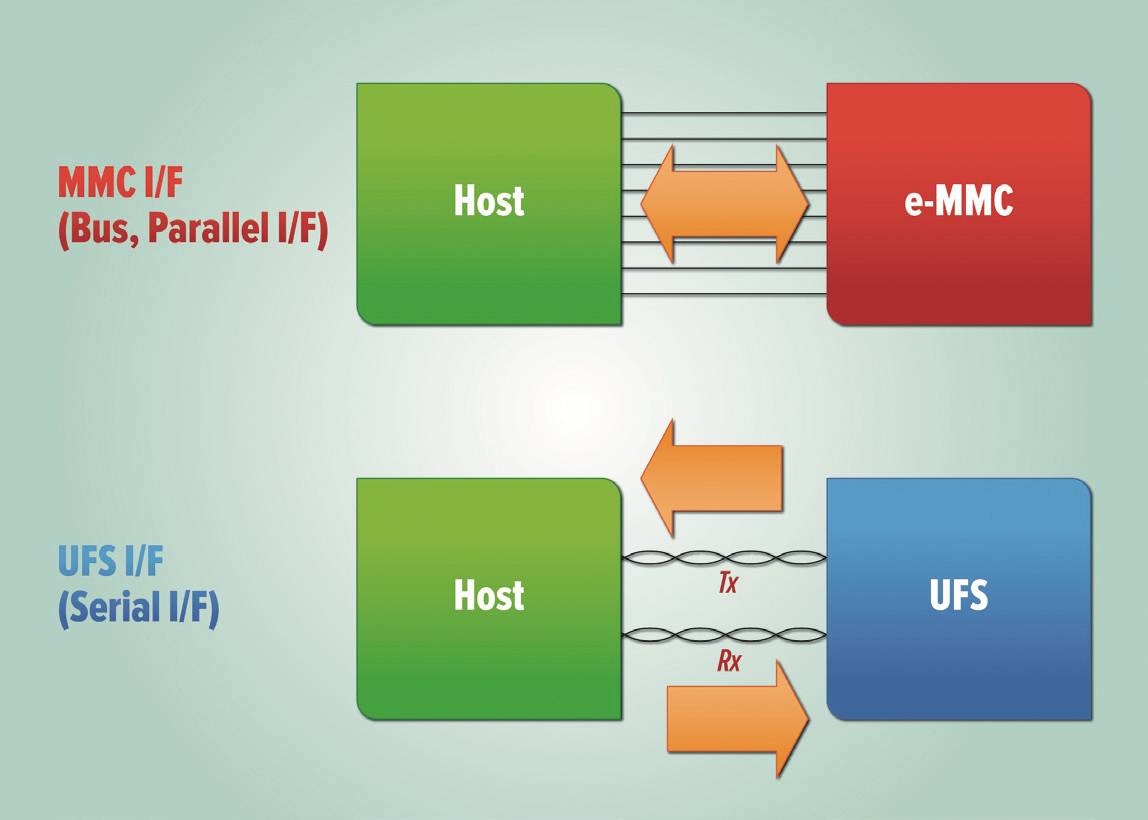
▲ The eMMC using a parallel interface has gradually struggled to meet the current demands of mobile users; even with continuous upgrades, it merely widens the single lane without efficiently achieving “two-way traffic”.
UFS stands for Universal Flash Storage. The earliest UFS 1.1 was not particularly fast, with a theoretical bandwidth of only 300MB/s. Due to cost and compatibility constraints, UFS 1.1 did not gain popularity and quickly disappeared. JEDEC released a new USF 2.0 standard with two versions, where UFS 2.0 HS-G2 has a theoretical bandwidth of about 740MB/s, and the faster UFS 2.0 HS-G3 has a theoretical bandwidth of up to 1.5GB/s, which is 2.5 times faster than the current fastest eMMC 5.1. UFS uses a serial interface and supports simultaneous read and write operations, with standby power consumption about half that of eMMC.
In March 2016, JEDEC released the UFS 2.1 flash storage standard. Compared to UFS 2.0, the speed standards remain unchanged, still mandating HS-G2 as the mandatory standard and HS-G3 as the optional standard. Improvements are mainly in three areas: device health, performance optimization, and security protection. For flash manufacturers, since UFS 2.0 has already released a version corresponding to HS-G3, it no longer makes much sense to adopt a lower standard for UFS 2.1. Therefore, all UFS 2.1 in the market adopts the optional HS-G3 standard, with a maximum read/write speed of 1.5GB/s.
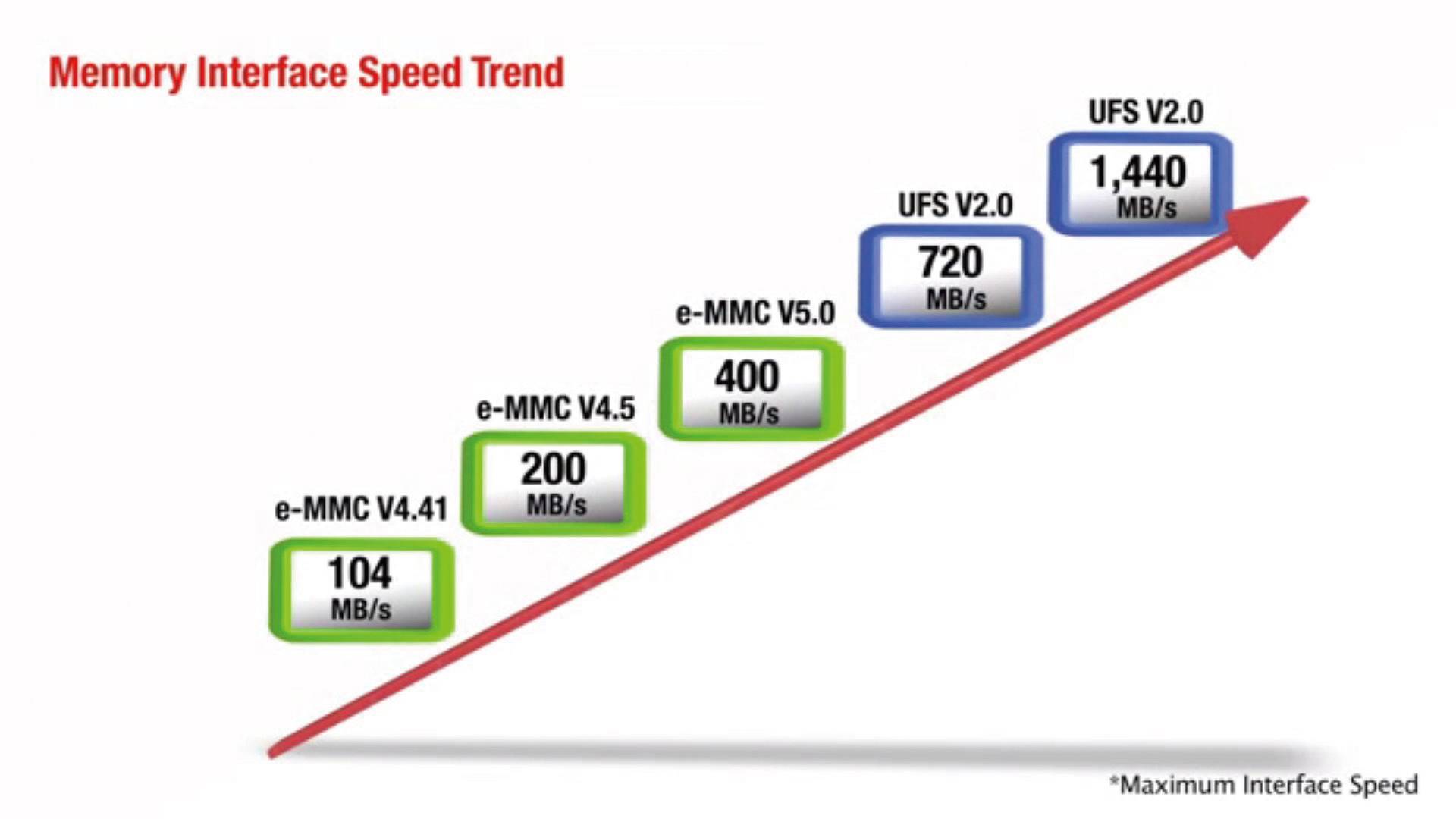
▲ The impact of different versions of eMMC and UFS protocols on maximum read/write speeds is quite significant.
NVMe (NVM Express) was originally designed for SSDs to replace the SATA interface on SSDs. In 2015, Apple introduced the highly praised NVMe protocol from MacBook to the iPhone 6s/iPhone 6s Plus, with larger capacity versions supporting TLC/SLC hybrid caching acceleration, allowing NAND flash on iPhones to achieve SSD-like performance. Unlike the SDIO interface used by eMMC, NVMe uses a PCIe interface, which is not the same as the PCIe on PCs but is based on the MIPI M-PHY physical layer. Compared to traditional SCSI interface protocols, NVMe features high efficiency and low load, thus providing higher performance and lower latency.
After understanding the pros and cons of the three protocols in mobile flash memory, let’s take a look at which models they appear in and what differences are experienced in practice.
NVMe is introduced by Apple for the iPhone and currently appears only in models after the iPhone 6s. Clearly, this is a customized technology by Apple, as there are currently no available solutions on the market. In the same iPhone model, although different capacity versions use the NVMe transmission protocol, there are cases of mixed use of MLC and TLC particles.
For example, the iPhone 7 Plus 32GB version uses MLC particles, while the 128GB and 256GB versions use TLC particles. In larger capacity versions, NVMe provides TLC/SLC hybrid caching acceleration, simulating part of TLC as SLC cache for acceleration, resulting in significant differences in read/write speeds between the “Emperor version” and “Beggar version.” Through PassMark testing, the read and write speeds of the iPhone 7 Plus 32GB version are 691MB/s and 39.6MB/s, respectively, while the 256GB version reaches 892MB/s and 357MB/s.

▲ Thanks to the advantages of NVMe flash memory introduced from MacBook, the read and write speeds of the flash memory in the iPhone 6s/iPhone 6s Plus had virtually no competitors at the time.
Fortunately, the iOS system is not as open as Android, so under non-jailbroken conditions, users cannot perform file management operations on the phone, nor can they write files directly when connected to a computer. Therefore, in general situations, the write speed of the “Beggar version” does not feel significantly different from that of the “Emperor version.” It is worth noting that the iPhone 7 Plus 128GB version is 800 yuan more expensive than the 32GB version, and this price difference is enough to buy a mid-range phone.
Additionally, the newly released iPhone 8 Plus also offers 256GB and 64GB versions. Hopefully, this time the “Beggar version” will not use MLC particles, allowing purchasing users to spend less money while still enjoying the treatment of the “Emperor version.” After all, compared to the usage cycle of a smartphone, the lifespan of TLC is already long enough, and the read/write speed can significantly enhance user experience.
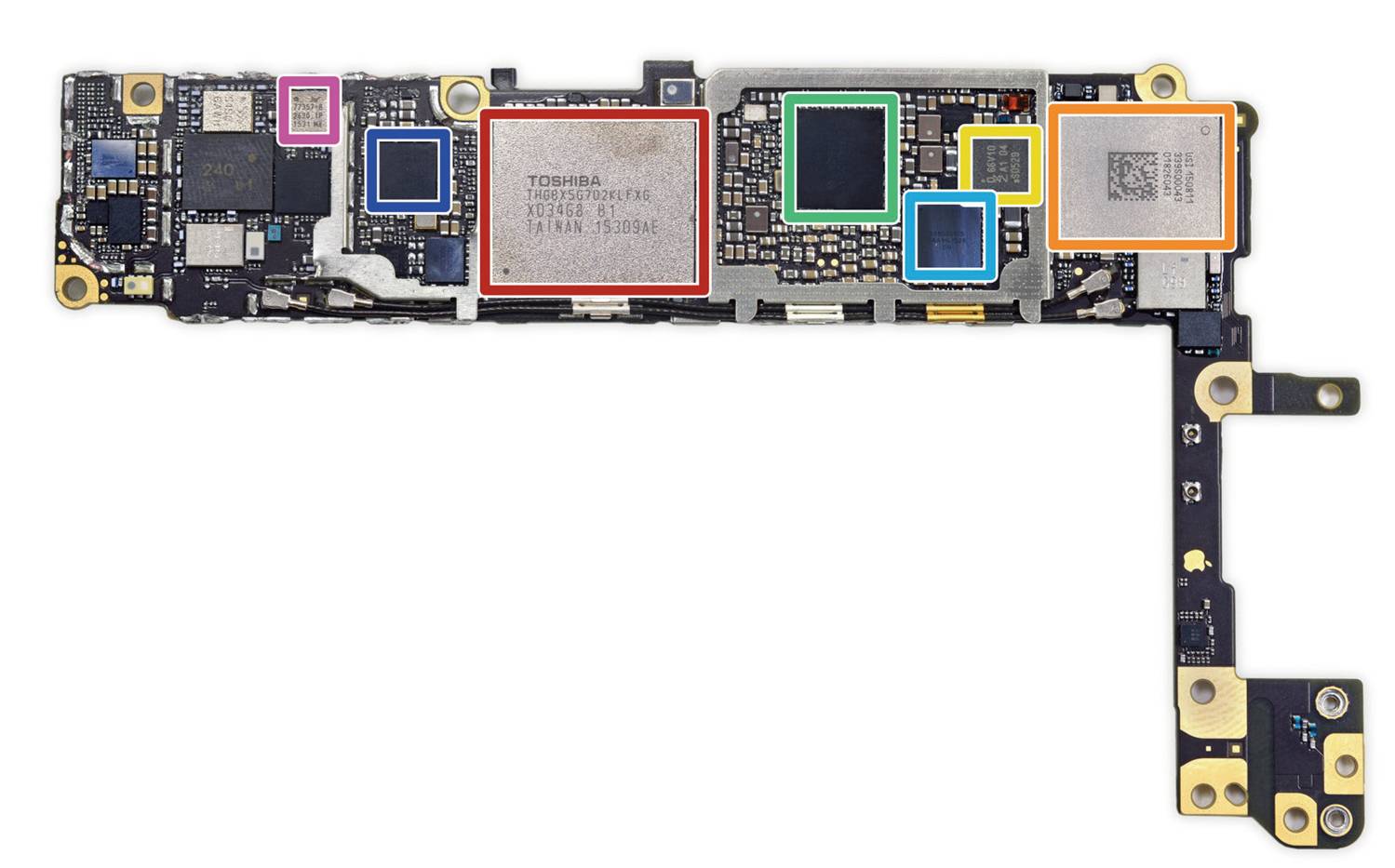
▲ Starting from the iPhone 6s, Apple introduced the NVMe protocol in mobile flash memory (the red area in the image is the flash memory module).
UFS is commonly found in high-end flagship models in the Android camp, featuring UFS 2.0 HS-G3 and UFS 3.0 HS-G3. Since both have the same maximum read/write speeds, their actual performance is also very close, which can easily confuse consumers. Taking the Toshiba UFS 2.0 protocol flash (model THGBF7G9L4LBATR, MLC particles) used in the Samsung Galaxy S8 as an example, the measured maximum read speed is 744.56MB/s and write speed is 155.84MB/s, with no difference in read/write rates compared to the Toshiba UFS2.1 flash (model THGAF4G9N4LBAIR, MLC particles) used in the Samsung Galaxy S8+. However, the latter’s sequential read, sequential write, random read, and random write speeds are all faster than the former by 40%, 16%, 120%, and 80%, respectively. In daily operations of smartphones, we require a large number of read/write small files. Random read/write operations account for the vast majority, while the read/write operations of large files, such as copying HD movies, are relatively rare.
Moreover, the vast majority of mid-range and low-end smartphones still use eMMC protocol flash, as its lower cost, larger production volume, and adequate performance mean it will not be eliminated anytime soon. At the same time, the flash memory particles in these smartphones are mostly the relatively inexpensive TLC. Through AndroBench testing of a smartphone using eMMC 5.1 protocol flash, its sequential read and write speeds are 226.51MB/s and 87.8MB/s, respectively.
As an ordinary user, if the manufacturer does not specify detailed specifications, how can one determine which protocol is used? It’s simple; just install an app that can read the underlying system information of the phone—an Android terminal emulator will do. After installation, enter “ls /proc/fs/*” (without quotes) and hit enter. If the information contains “sdd,” it indicates UFS flash; if it contains “mmcblk,” it indicates eMMC flash.
Impact of Read/Write Speeds
1. Faster Multi-task Execution Response
NVMe and UFS have dedicated serial interfaces that allow read/write operations to occur simultaneously; they can dynamically allocate queue tasks without waiting for the previous process to finish. In contrast, eMMC must execute read and write operations separately, and the instructions are also packaged, making eMMC naturally slower during multi-task execution.
2. Faster Game Loading Speeds
When preloading large games or large files, NVMe and UFS require less time, with the time needed to load a game being about 1/3 that of eMMC 5.0, resulting in lower latency and smoother gameplay experiences. A notable example is when using the iPhone 6 and iPhone 6s to run the “Need for Speed” series games; the preloading of the track maps takes significantly longer on the former. Apart from the differences in processor performance, the disparity in flash memory read/write speeds is also a major factor.
3. Faster Photo Writing During Continuous Shooting
The differences in experience between NVMe, UFS, and eMMC also extend to continuous photography, where NVMe and UFS enable faster photo writing and processing, while eMMC takes longer from pressing the shutter to storing a photo, potentially missing the opportunity to capture a moment. Additionally, the increasingly popular dual-camera smartphones undergo a compositing process during background blurring or zoom shooting, which can experience virtually no delay on high-speed flash memory, while switching to eMMC flash may impact the user’s photography experience.
4. Shorter Thumbnail Loading Times in Albums
When a phone is filled with hundreds or even thousands of photos, the loading process of opening the album’s image thumbnails can be noticeably compared; this is caused by the phone’s inability to keep up with the refresh speed when reading photos from flash memory. On excellent smartphone screens, images will load smoothly as you scroll, while lesser phones may experience significant delays or even stuttering.
5. Increased Speed Reduces Power Consumption
NVMe and UFS take less time to complete the same tasks, and higher efficiency means lower power consumption. Meanwhile, UFS consumes about 10% less power than eMMC, saving approximately 35% of power during daily operations.

Conclusion
From the mobile flash memory market in recent years, UFS has become the best choice for flagship models due to its decent performance and acceptable pricing, especially with the recently exposed UFS 3.0, which boasts a theoretical maximum read speed that has doubled compared to its predecessor, reaching 2400MB/s, which is six times that of eMMC 5.1, making it highly anticipated. The NMVe protocol has only appeared in Apple products so far, but its performance has been recognized. In contrast, eMMC has shown signs of fatigue, and even if eMMC 5.2 products emerge in the near future, they cannot break through the bottleneck of parallel interfaces to make significant improvements.


